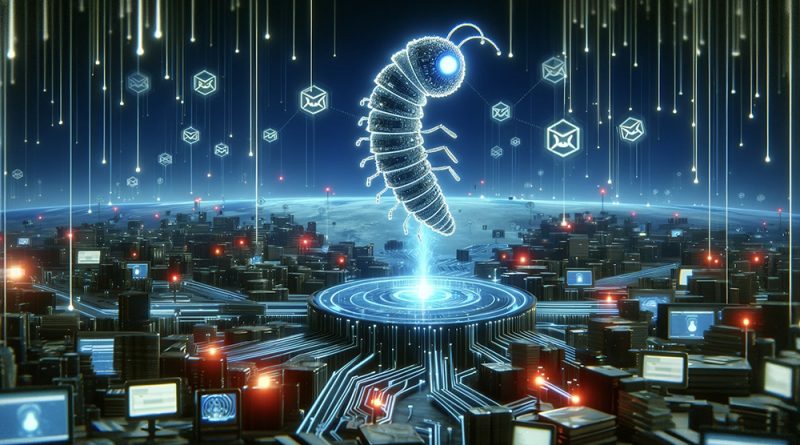Morris II: The Evolution of AI Worms in Cybersecurity Threats
In a groundbreaking experiment, security experts have unveiled Morris II, a self-replicating AI worm capable of penetrating and reading emails to disseminate malware and pilfer data. Named in homage to the pioneering computer worm of 1988, Morris II is the collaborative brainchild of researchers from both the United States and Israel. Their aim is to shed light on the emerging dangers posed by generative artificial intelligence (GenAI) technologies.
This innovative worm specifically targets AI-driven applications, leveraging platforms such as OpenAI’s ChatGPT and Google’s Gemini. Demonstrations have shown its ability to breach GenAI-enhanced email assistants, facilitating personal data theft and initiating spam campaigns. Unlike traditional malware, Morris II introduces the era of “zero-click malware,” where victims need not interact with a malicious link or attachment to activate the threat. The infection and its spread are autonomously executed by the AI tools themselves.
The researchers’ findings, published in the study ‘ComPromptMized: Unleashing zero-click worms that target GenAI-powered applications’, illustrate a concerning scenario. Malicious prompts, once processed by a GenAI model, can replicate and perform harmful actions without user intervention, exploiting the interconnected nature of the GenAI ecosystem to propagate further.
Since ChatGPT’s introduction in 2022, the cybersecurity community has raised alarms over the potential misuse of generative AI by malicious actors. The technology’s capacity to mimic human-like text could empower even those with limited language skills to craft convincing phishing emails and messages.
CrowdStrike, a leading cybersecurity firm, echoed these concerns in its recent Global Threat Report. The report highlights instances of nation-states and hacktivist groups experimenting with GenAI tools such as ChatGPT for cyber warfare. With generative AI set to grow in popularity, it’s anticipated to become a tool of choice for cybercriminals, lowering the entry barrier for conducting complex cyberattacks.
This latest research into Morris II not only underscores the innovative strides in AI but also serves as a stark reminder of the cybersecurity implications that accompany technological advancement. As generative AI continues to evolve, so too does the landscape of cyber threats, challenging the cybersecurity community to stay one step ahead.


What are the odds this worm was tested at large today? Or something like it? Nearly all social media and large commerce sites all went down down within a matter of moments.